'Beast from the East' sends wintry blast through Europe, leaves two dozen dead
The Siberian weather blast has wreaked havoc on Europe this week.
LONDON -- The so-called "Beast from the East," a Siberian weather blast that has wreaked havoc on Europe this week, is being blamed for at least two dozen deaths.
And now scientists are warning that this "extreme" weather may become more common.
"It’s never been this extreme," Ruth Mottram, a climate scientist at the Danish Meteorological Institute (DMI), told Reuters.
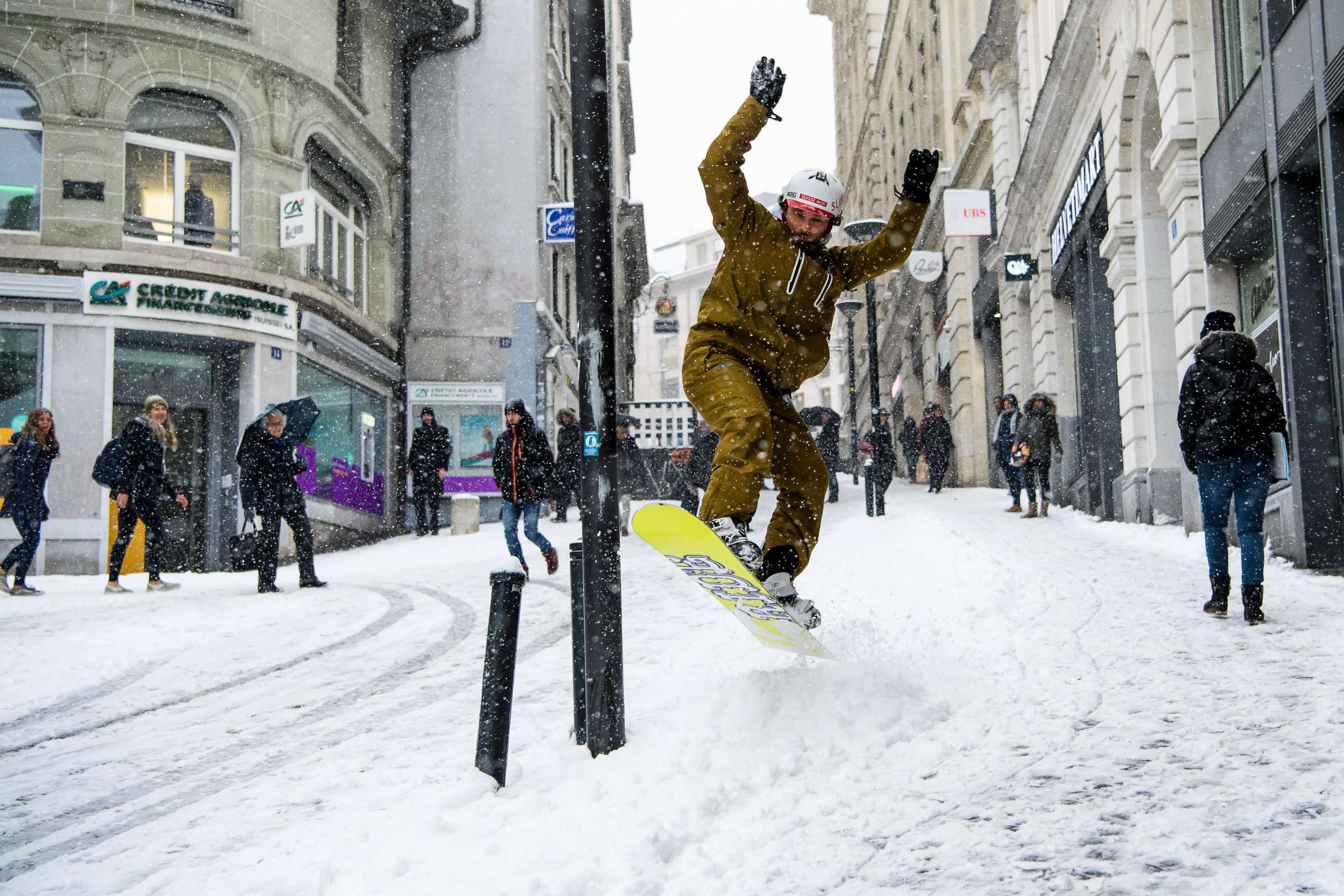
Around the entire Arctic region, temperatures are now about 36 degrees Fahrenheit above normal, around 17.6 degrees Fahrenheit, according to DMI calculations. That is warmer than certain parts of Europe today.
According to the U.S. National Snow and Ice Data Center, the Arctic Ocean sea ice is at a record low for this time of year.
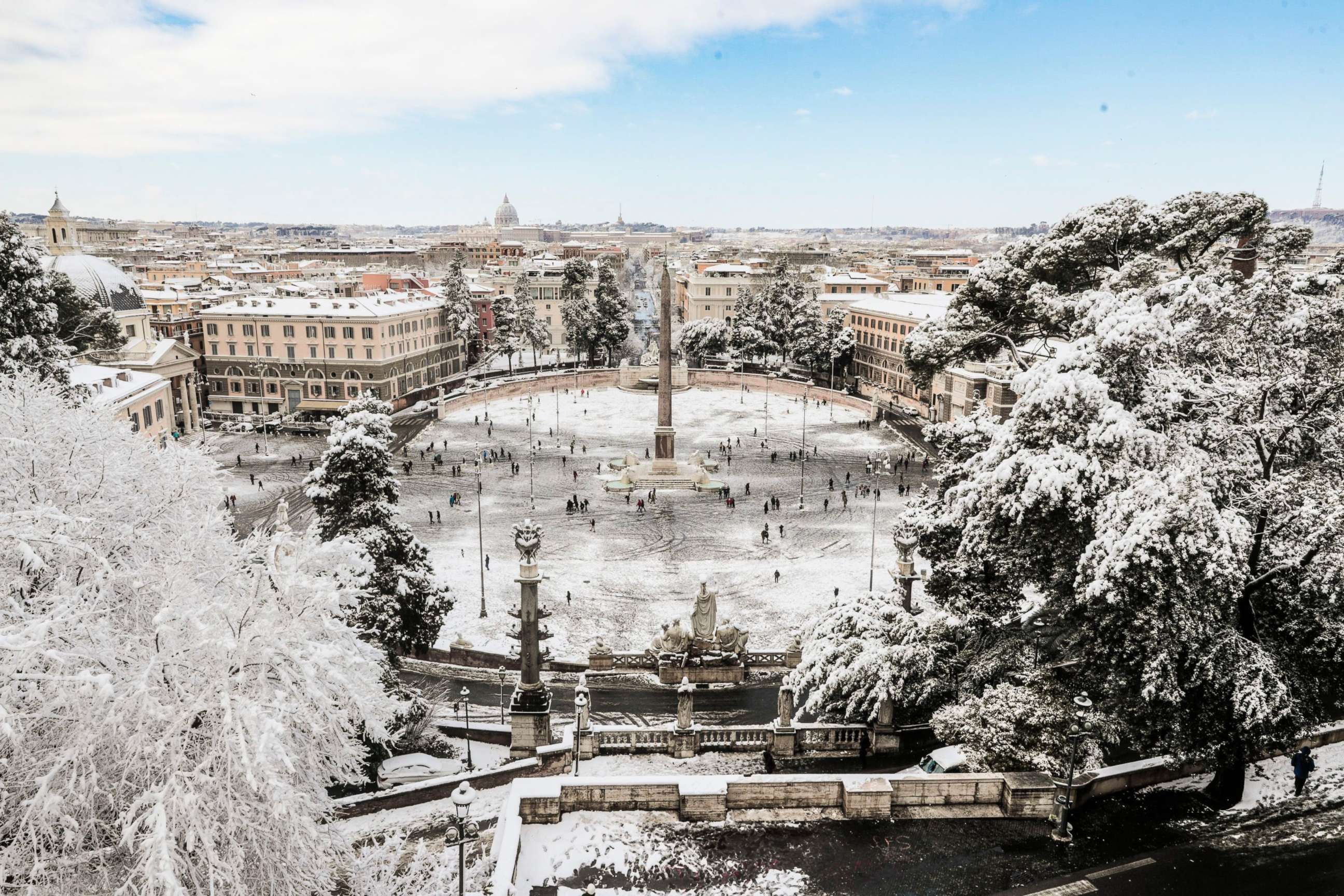
Scientists explain that as warmer temperatures disrupt the high altitude jet stream, colder temperatures will then penetrate farther south, which is what Europe has seen this week.
In the United Kingdom, thousands of schools across England, Scotland and Wales have been closed. Overnight, hundreds of motorists were stranded on highways, and flight cancellations at London airports are increasing, with more snow in the forecast today. Passengers were stranded in train stations Thursday morning, and many commuters experienced hours-long delays.
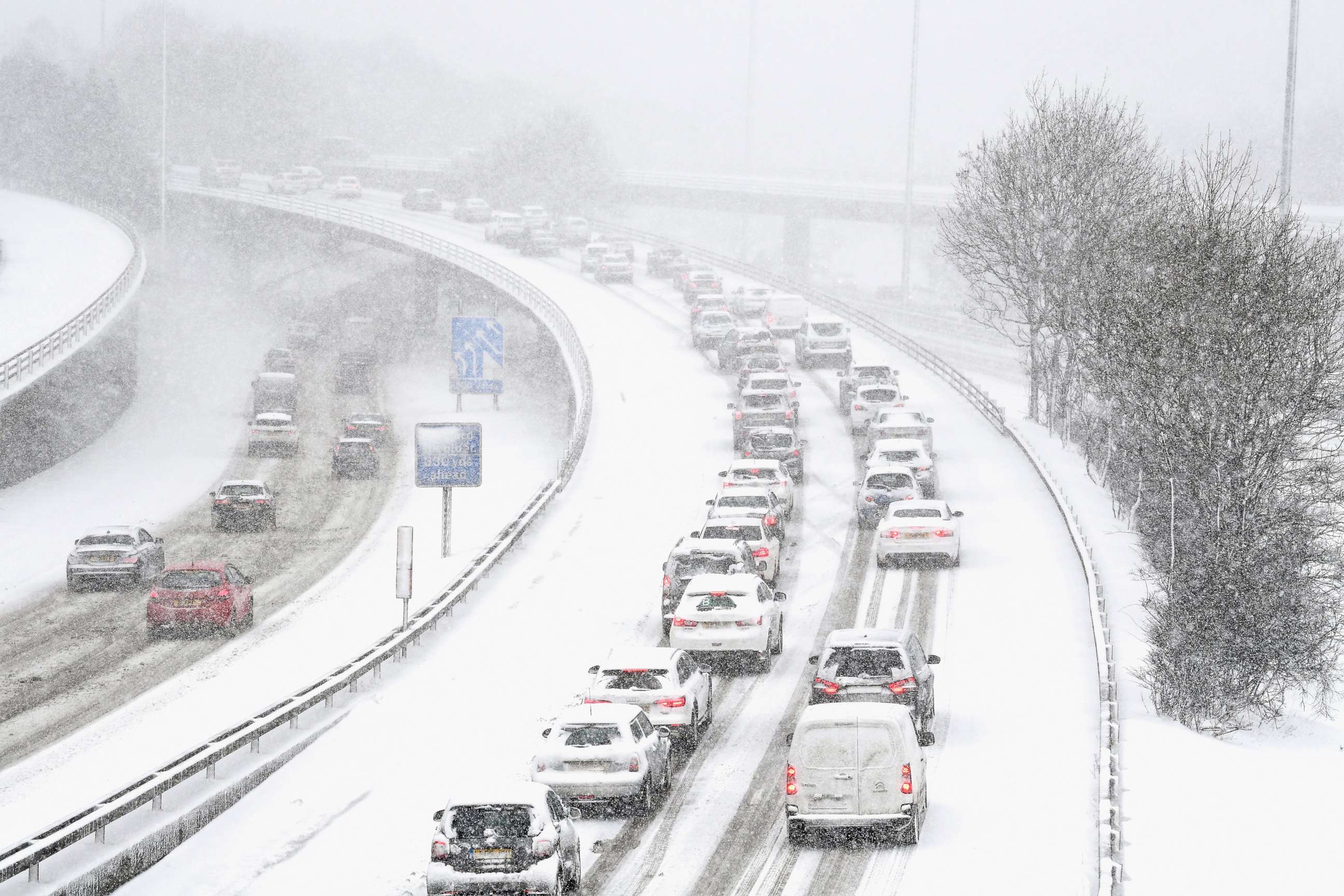
The British Met Office has issued a red weather alert for parts of south-west England and south Wales, meaning there is a "risk to life."
Authorities have told people to stay indoors and get off the roads. In Ireland, Dublin Airport has canceled all flights until Saturday morning.
Farther south, in Italy, a rare snowstorm delighted tourists and Romans earlier this week, blanketing the coliseum and freezing the city's famous fountains. Today, snow swept through other parts of the country including Genoa, Milan, Bologna, Florence and Venice.
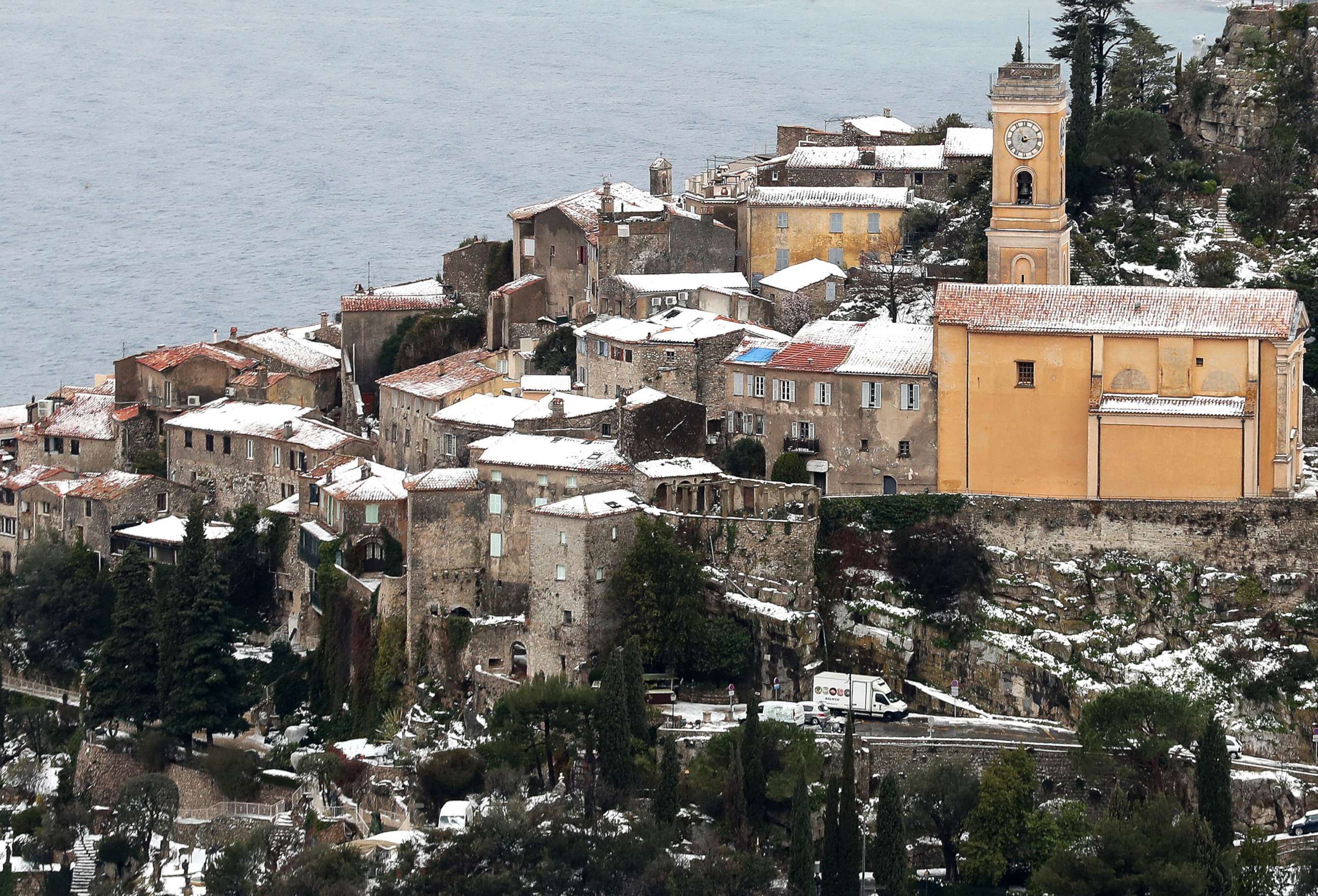
In Geneva, Switzerland, a city used to heavy snowfall, flights were still grounded Thursday morning.
And even down on the French Riviera, numerous spin-outs and traffic accidents were reported along the coast given the white-out conditions.
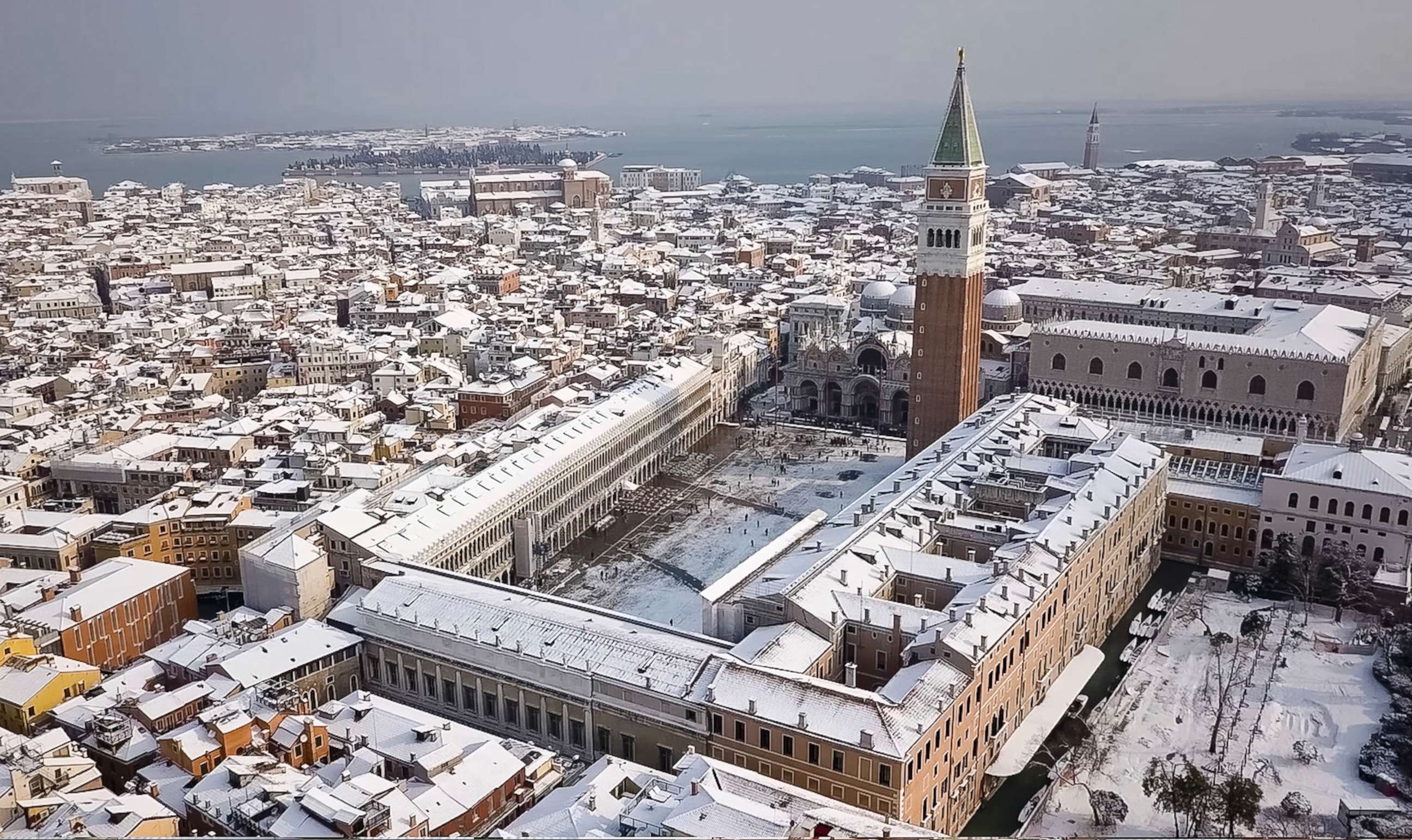
In Brussels, authorities planned to detain homeless people overnight if they refused shelter, as temperatures are set to fall as low as 14 degrees Fahrenheit this week. And cities from Warsaw to Oslo are expecting sub 17 degrees Fahrenheit temperatures all week.




